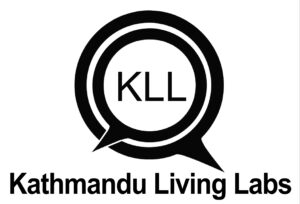Germany is the leading country when it comes to OpenStreetMap (OSM), and here this online map as well as the OSM data are well recognized. But what about other parts of the world? What kind of possibilities can OSM offer for fostering development and building resilience against disasters?
Last Friday the students attending of the course “Disaster Mapping 2.0: Volunteered Geographic Information in Disaster Risk Management and in Humanitarian Aid” had the chance to get first-hand information about the importance and use of OSM data in disaster prone and vulnerable regions by one of the leading international practitioners in the field: Dr. Nama Raj Budhathoki, Director of Kathmandu Living Labs and Consultant at the World Bank.
As an innovative feature of the course, which is offered by Prof. Dr. João Porto de Albuquerque together with Svend-Jonas Schellhorn since the summer semester 2013, in addition to the theoretical exploration of the topic, students engage in practical work in the area of VGI for Disaster Risk Management, as well as contribute to real-world projects and get in contact with practitioners in the field of humanitarian aid.
Thus, last Friday, after interesting presentations in which the students got first insights in OSM and VGI, the second part of the day started with a webinar by Nama. He informed the students about the importance and need of open data in Kathmandu, and Nepal in general. Not only data, and particularly basemap data, are very rare and not readily available in Nepal, but also the country can be hit anytime by an -in fact overdue- earthquake that could cause catastrophic consequences. The objective of Kathmandu Living Labs (KLL), a small organization located in the city center of Kathmandu, is to harness human potential and creativity by leveraging open data and civic technology. That way, they want to solve Nepal’s most difficult problems- in a collaborative manner.
Nama explained the students about their projects, which include mapping in OpenStreetMap all health and educational facilities within the Kathmandu Valley for disaster risk reduction and preparedness. All the information about the mapped facilities is now openly available for everyone in OSM and can be used for risk assessment and planning. Above that, the KLL team conducts numerous sensitization presentations and Mapping Parties in universities, governmental and non-governmental organizations in the Kathmandu Valley and beyond, to build a stable OSM community in Nepal and to make people aware about the advantages of open data and the possibilities open data offers- with great success. Not only did they manage to establish a stable OSM community in Nepal, the collected data also helps to improve the risk assessment and is of crucial importance for the disaster management in Nepal. Other interesting projects involve developing tools that make use of the collected OSM data, such as the Taxi Meter App and the Public Transport App. These applications clearly show the possibilities open data can unleash, not only for disaster management, but also for development and urban planning purposes.

After the webinar, the students became active themselves in a Remote Mapping Exercise. The given task was to map an area outside of Kathmandu and thereby support the work of KLL and the local OSM community in Nepal. Additionally, the mapping exercise was combined with research that is conducted by Melanie Eckle, undergraduate research assistant of the GIScience group and former intern at KLL, in cooperation with the Nepalese organization. The objective of the research is to improve the data quality of remote mapping by volunteers, such that of the Missing Maps project.
The seminar day was completed with a discussion in which in the students presented their experiences, and discussed the potential and problems in the use of VGI and remote mapping again with Nama, who joined the conversation via live stream.

We thank Nama again for sharing his experience with us and are very looking forward to taking the interesting cooperation with the KLL team further!



